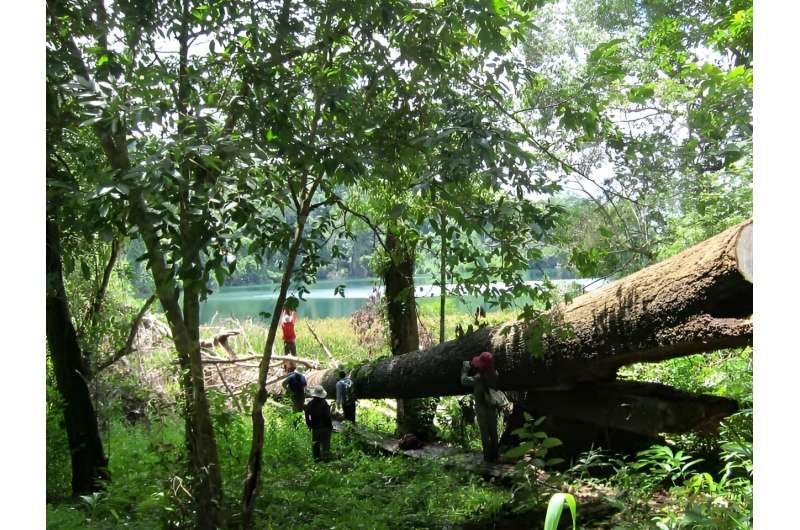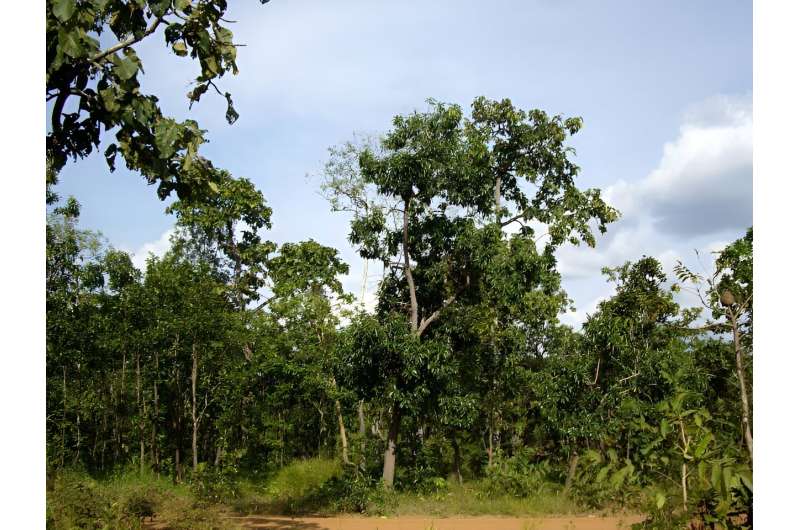
Credit: Dr Rebecca Hamilton/The University of Sydney
A team of international scientists, led by Dr. Rebecca Hamilton at the University of Sydney, has found that rather than dry savannah in South East Asia dominating during the Last Glacial Maximum more than 19,000 years ago, there was a mosaic of diverse closed and open forest types, upending previous scientific consensus.
The findings suggest Asia’s tropical forests could be more resilient to climate change than previously thought, provided a diversity of landscape is maintained. They further show that humans and animals migrating across the region would have had a more diverse resource base than previously understood.
The research is published in the Proceedings of the National Academy of Sciences.
Dr. Hamilton, from the School of Geosciences at the University of Sydney, said that with climate change accelerating, scientists and ecologists have been concerned about what impact this will have on tropical rainforests in regions like South East Asia.
“Maintaining forest types that facilitate resilience should be a conservation objective for the region. Our work suggests that prioritizing protection of forests above 1000 meters (‘montane forest’) alongside seasonally dry forest types could be important for preventing future ‘savannization’ of Asia’s rainforests,” she said.
Savannization refers to the metamorphosis of a landscape, typically a forested area, into a savannah ecosystem, which typically involves open wooded plains. The change is typically induced by climate variations, human interventions or natural ecological dynamics.
The researchers analyzed records from 59 paleoenvironmental sites across tropical SE Asia to test the so-called savannah model, which assumed a large, uniform grassland expanded across the region during the Last Glacial Maximum.
They found that records from pollen grains preserved in lakes show forests persisted during this period alongside an expansion of grasslands, indicated by other biochemical signatures.

Credit: Dr Rebecca Hamilton/The University of Sydney
Dr. Hamilton said, “We put forward the idea that these seeming discrepancies can be reconciled, if during the cool and seasonal climate of the Last Glacial Maximum, montane forests (above 1000m) persisted and expanded in high-elevation regions, while lowlands experienced a shift to seasonally dry forests, which have a naturally grassy understory.”
The team also included scientists from the Max Planck Institute of Geoanthropology in Jena, Germany; Flinders University; Purdue University in the U.S.; University of the Philippines; and the Australian National University.
Researchers said that they expect the statistical methods developed to cross-compare the many paleoecological records will be useful for regional testing of other past ecological change.
More information:
Hamilton, Rebecca et al, Forest mosaics, not savanna corridors, dominated in Southeast Asia during the Last Glacial Maximum, Proceedings of the National Academy of Sciences (2023). DOI: 10.1073/pnas.2311280120. doi.org/10.1073/pnas.2311280120
Citation:
‘Maintain Asian forest diversity to avoid climate change impact,’ suggests new study (2023, December 25)
retrieved 26 December 2023
from https://phys.org/news/2023-12-asian-forest-diversity-climate-impact.html
This document is subject to copyright. Apart from any fair dealing for the purpose of private study or research, no
part may be reproduced without the written permission. The content is provided for information purposes only.
>>> Read full article>>>
Copyright for syndicated content belongs to the linked Source : Phys.org – https://phys.org/news/2023-12-asian-forest-diversity-climate-impact.html































